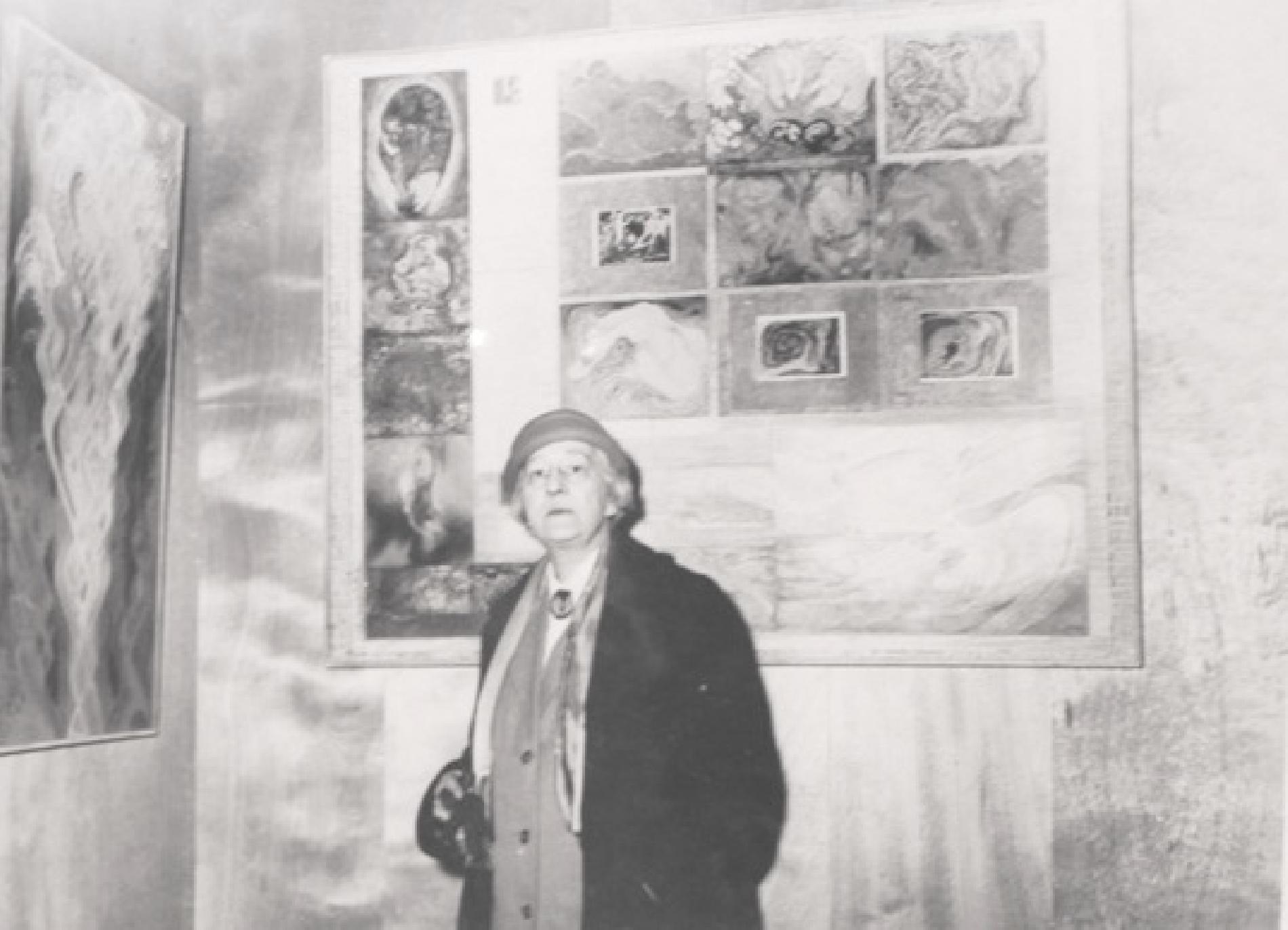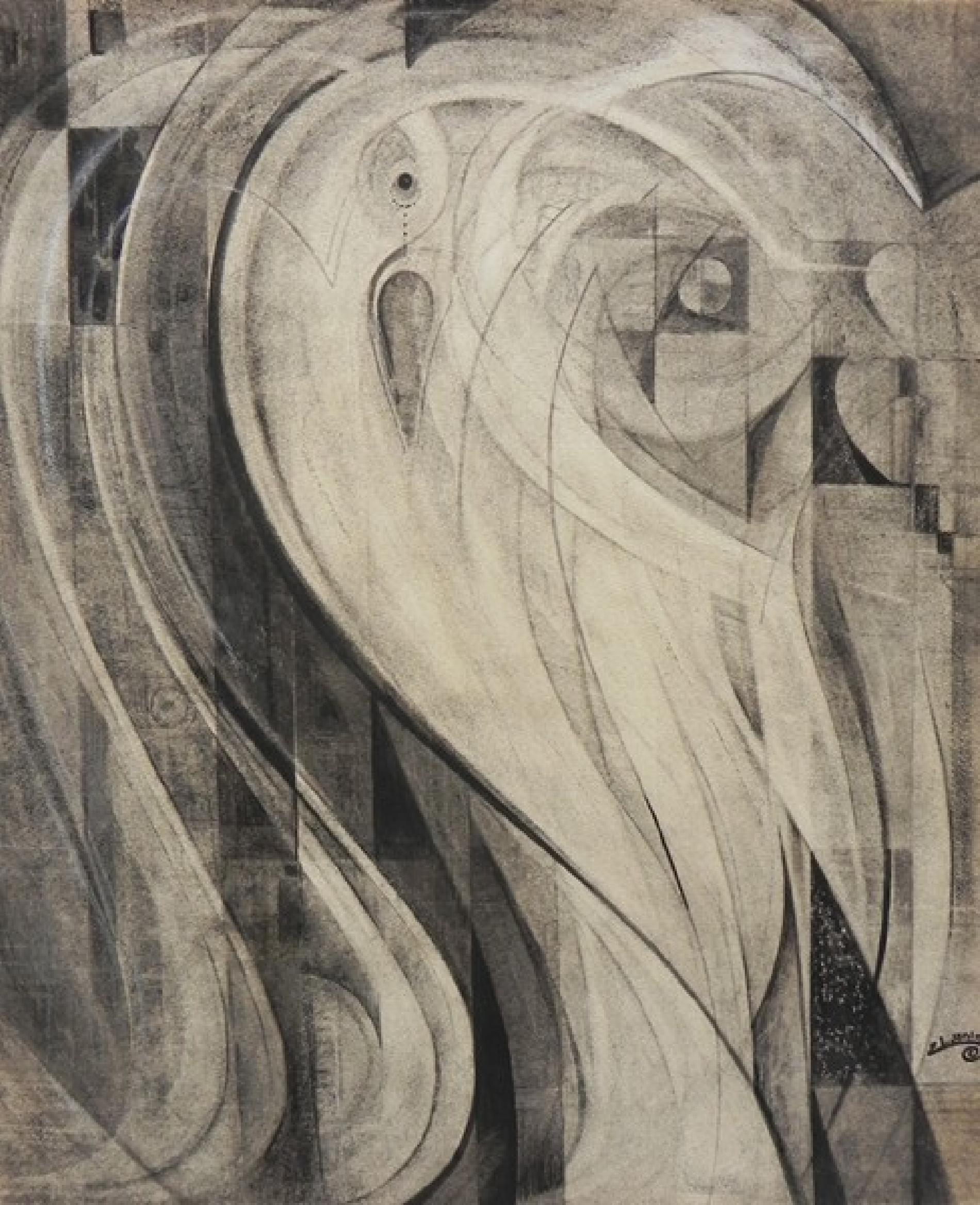Louise JANIN was born in 1893, in Durham, about a hundred miles north of Boston. His family, of French origin, emigrated at the beginning of the century to New Orleans and made a fortune in mining. His father collected Far Eastern art and was an important collection. The divorce of her father and mother will deeply affect the little girl who will find refuge in an imaginary world populated by Eastern deities, tigers and dragons.
Remariée, the mother of Louise settles in San Francisco. At school, the girl is already showing her plans for drawing, music and theater. At 13 years old, the earthquake marked her deeply, this brutal irruption of the underground forces and the fire which followed it will undoubtedly influence the themes, forms and colors of a part of her work.
From the age of 18, she chose to be an artist, attended the San Francisco Academy of Fine Arts and took advantage of the latest lessons from William M. Chase, one of the leading representatives of American Impressionism. In 1915, she realized with her parents a long journey in Asia and will deepen her taste for oriental philosophies.
• ORIENTALISM ONIRIQUE AND SPIRITUALIST
On her return to San Francisco she regularly exhibited Hindu-inspired works until 1920.
In 1921, she moved to New York, exhibited in Chicago and Saint Louis. In 1923 she undertakes a trip to Europe, visits Italy, Paris and London and settles in Paris. She is 30 years old.
From 1924 to 1931 his works will be exhibited in France at the Bernheim-Jeune Gallery, the Salon des Orientalists, the Georges Petit Gallery and the Hindustan Pavilion during the Colonial Exhibition. In the United States, they are presented in San Francisco and New York. Louise Janin then acquired an important reputation and became a recognized and celebrated artist of Decorative Arts.
In 1926 the meeting with František Kupka and their exchanges on art will give rise to a true friendship. Louise's work will then move away from figuration and integrate a cosmic vision of the world.
• MUSICALISM
In 1931, Henri Valensi who is preparing his 'Manifeste des Artistes Musistes' notes the closeness between Louise Janin's painting and her own research. He asked her to participate in the first Salon des Artistes musicalistes, Louise accepts and will remain faithful to the exhibitions of the movement until 1960 and will participate, in 1963, to the tribute to Valensi at the Museum of Lyon, then in 1973, to the retrospective Musical salons in Paris.
She is in Corsica when the war breaks out and is interned in an Italian camp. She will suffer not only deprivations but also the loss of one of her best friends. This time of seclusion will be used to make sketches that will feed his future work.
• COSMOGONY
From 1953, Louise Janin, while continuing in the traditional ways of drawing and painting, seeks to explore other techniques giving more importance to contingency. Through the mixing of materials and pigments under the watchful hand of the artist are born the 'cosmograms', in the image of poetic worlds in creation.
• SCRIPTURES
All her life, Louise Janin will not stop writing. From 1928, she collaborates regularly in France in the magazine 'ABC-Magazine of Art', in the USA to 'Leonardo', in India to, 'Rhythm' and 'Southern Chronicle'. His articles testify to his great erudition and his critical spirit, which does not spare certain artists or contemporary merchants. Poetry has always been part of his life. His many poems appear from 1950 in English-language journals and are particularly popular in India.
• CREATING FORCE
After 1960, Louise Janin gradually abandons the creation of 'cosmograms' but continues to use every moment to draw and paint in her studio rue Antoine Chantin in Paris. In 1992, at the age of 99, works are still emerging, she will pursue her creative passion until her death in 1997, at the age of 104 years.
Bibliography:
□ Edouard Schure, preface to the Catalog of the exhibition at the Galerie Bernheim-Jeune (Paris, 1924)
□ Encyclopedia Britannica Arts, 1930
edition □ Edouard Joseph, Biographical Dictionary of Contemporary Artists (Paris, 1931)
□ Jean-Jacques Lévêque, Louise Janin (Editions Ishtar, Paris, 1959)
□ Robert Vrinat, Louise Janin, Vision on the Arts (Béziers, 1974)
□ Elie-Charles Flamand, Roger Otahi, Catalog from the exhibition at the Hexagram gallery (Paris, 1974)
□ Dr. Raymond Piper, Ingo Swann, Cosmic Art (New York, 1975)
□ Edan Milton Hughes, Artists in California, 1746-1940 (San Francisco, 1986 )
□ Michèle Lefrançois, Catalog of the exhibition "Coloniales" Boulogne-Billancourt Museum (1989)
□ Daniel Schidlower, Catalog of the exhibition "What is Musicalism?", Galerie Drouart (Paris) 1990)
□ Nicole Lamothe, Monique Marmacheva, Louise Janin, witness of the century (Paris, 1993)
□ E. Bénézit, D list of painters, sculptors, draughtsmen and engravers, (Evreux, 1999)
27 x 20 cm
Musical abstraction
Gouache or watercolor
Watercolor graphite pencil and gouache on paper
27 x 20 cm
Signed lower right, stamp on the lower left.
Stamp on the lower right.
Gouache or watercolor
37 x 30 cm
27 x 20 cm
Musical abstraction
Gouache or watercolor
Watercolor graphite pencil and gouache on paper
27 x 20 cm
Signed lower right, stamp on the lower left.
Stamp on the lower right.
Gouache or watercolor
37 x 30 cm



